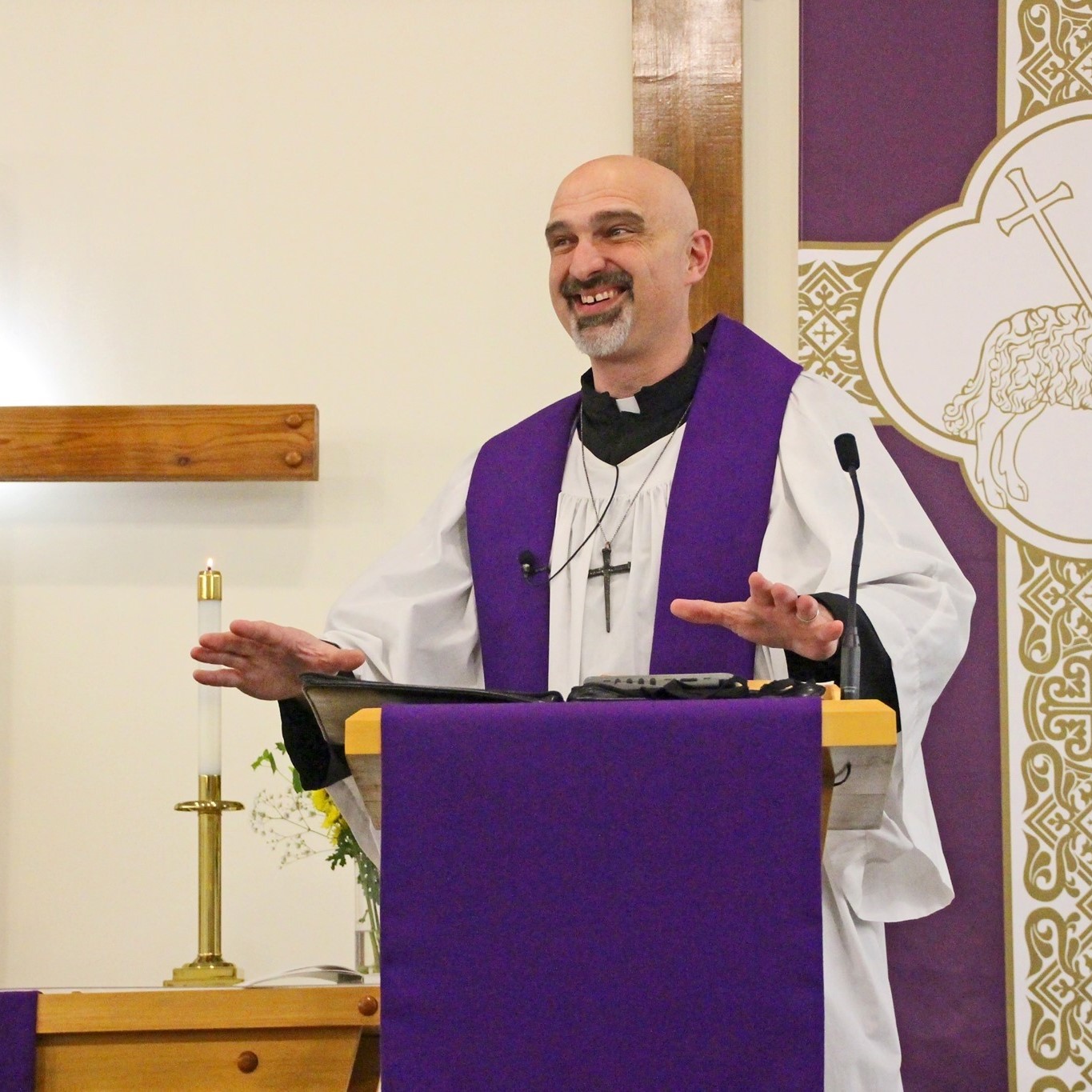Amillennialism: The Lutheran understanding of the end times is usually categorized as being amillennial (“a” means no and “mille” means thousand). As opposed to pre-millennial and post-millennial views, those who hold to an amillennial view do not believe that Christ will reign on earth for a literal 1000 years before the end of the world comes, but rather believe that He is reigning even now (Revelation 1:5-6, 5:1-14, Philippians 2:9, Colossians 1:13-14). Lutheran scholars often prefer the term “realized millennium” rather than amillennium because we believe that Christ has begun His reign already. Amillennialism has been the view held by most Christians for most of the history of the church. It is described briefly in the Augsburg Confession, Article XVII. Amillennialism was the position of Augustine, Luther, and John Calvin. For more information on this, see A Brief Statement of the Doctrinal Position of the Missouri Synod.
Antichrist(s): St. John doesn’t mention Antichrist or antichrists in Revelation, but does mention Antichrist three times in his first epistle and once in his second epistle. John speaks of there being many “antichrists,” yet seems to indicate one Antichrist will come as the end draws near. This Antichrist will deceive people by claiming to represent Christ, but proclaiming a message that is contrary to Christ. It seems that St. Paul describes the same idea in 2 Thessalonians when he writes of the “man of lawlessness.” This “man of lawlessness” exalts himself to the place of God. Lutherans, starting with Martin Luther, have equated the papacy as being the seat of the Antichrist for several reasons documented in A Treatise on the Power and Primacy of the Pope, The Smalcald Articles, IV, The Christian Cyclopedia, and A Brief Statement of the Doctrinal Position of the Missouri Synod.
Apocalyptic Literature: Derived from the Greek word apokalypsis (Rev 1:1), the term “apocalyptic” means “uncovering” or “revelation.” This genre of literature is present in Daniel and Revelation. It frequently uses visions, colors, numbers and vivid symbolism to make a theological point.
Armageddon: Derived from Hebrew har megiddo, “the mountain of Megiddo.” Armageddon refers to the battle mentioned in Revelation 16:16. Megiddo was the site of numerous important battles, some of which are described in the Old Testament (Judges 5:19, 2 Kings 23:29-30, 2 Chronicles 35:22-24). According to the premillennial understanding, there is to be one final great battle that will literally occur at Har Megiddo. Lutherans understand the battle of Armageddon as symbolic for the final battleground between God and the forces of evil.
Beast, The: Described in Revelation 13, the beast was believed in St. John’s day and for quite some time afterwards to represent the Roman Empire. Dr. Louis Brighton in his commentary on Revelation indicates that the meaning must be broadened to include every human authority and everything of human nature that Satan can corrupt, control and use in warfare against the Church.
Chiliasm: From the Greek word chilia, meaning “thousand.” Chiliasm is another term used to refer to the millennium and is synonymous with millennialism.
Dispensational Premillennialism: The views held by most Dispensational Premillennialists divide God’s dealings with humanity into seven distinct “dispensations”: Innocence (before the fall into sin), Conscience (from the fall to Noah), Human Government (from Noah to Abraham), Promise (from Abraham to Moses), Law (from Moses to Christ), Grace (the church age), and the Kingdom (the millennium). (Some dispensational premillennialists hold to three, four or eight dispensations. The sevenfold view was popularized by Cyrus Scofield’s Reference Bible.) In each of these periods, a distinct revelation of God’s will is dominant and test’s mankind’s obedience to God. Some who hold to the dispensational premillennial view believe there will be a secret return of Christ at which point the rapture will occur and Christians will be caught up with Him and delivered from the 7 year tribulation that is to come. During the 7 year tribulation, unbelievers have a second chance to come to faith. At the conclusion of the 7 year tribulation, there will be an battle called Armegeddon. Following this battle Jesus will return visibly to judge between the “sheep and the goats.” Then follows a 1000 year reign of Christ on the earth. After those 1000 years will come “Satan’s Little Season.” Finally there will be the new heavens and the new earth. Dispensational Premillennialism is the view espoused in and popularized by the Left Behind series and is widely held among American evangelicals. While Lutherans differ in beliefs about the end times with those holding a historic premillennial or postmillennial view, the difference is vastly greater with those holding the dispensational premillennialism. For more information, see The Christian Cyclopedia and A Lutheran Response to the “Left Behind” Series.
Eschatology: The study of the last (eschatos) days or last things.
Historic premillennialism: See Post-Tribulational premillennialism.
Judgment Day: The day when Christ will visibly return to judge the living and the dead. Judgment Day will be the last day and on that day all the dead will be raised. Believers in Christ will be raised to everlasting life with Christ in perfect and immortal bodies. Unbelievers will be raised to everlasting condemnation in hell. This is a day of joy for Christians who are baptized into Christ and confess Him as their Lord and Savior. It is not a day that Christians dread but a day that we hope for, as we pray, “Come quickly, Lord Jesus.”
Kingdom of God/Kingdom of Heaven: The kingdom of God is the reign of Christ. It is, as such, a kingdom that is really present now in His Word and Sacraments. It is also a kingdom that has yet to manifest its fullest glory. The Church, therefore, lives within this tension of “the kingdom now, but not yet” (cf. 1 John 3:2; Revelation 1:5-6). Christ is not going to establish an earthly kingdom (John 18:36).
Last Days: The phrase “the last days” appears twenty-seven times in the New Testament. Dispensational Premillennialists believe that with the creation of the 1948 state of Israel the world has entered the last days. In several instances, the expression refers to the end of history. However, in most passages (e.g., Acts 2:17; 1 Corinthians 10:11; Hebrews 1:1–2 and 1 Peter 1:20) it indicates that the last days began in the New Testament era with the coming of Jesus Christ. We are in the last days.
Man of Lawlessness: See Antichrist(s).
Millennium: A millennium is 1000 years and comes from the Latin mille (thousand) and annus (year). Revelation 20:2-6 speaks of a 1000 year reign of Christ. However, as with all numbers in Revelation, the number should not be taken in a literal sense. The 1000 years represents the complete time of Christ’s reign as King that started with His first coming and will conclude with His second coming when His kingdom is fully realized in the new heaven and new earth. (see Amillennialism) For more information, see The Christian Cyclopedia.
Millennialism: The belief that there will be a 1000 year reign of God on earth. It is synonymous with Chiliasm.
Parousia: Another term used to speak of Christ’s second coming. It comes from the Greek word for “presence.” This word also means “arrival.”
Postmillennialism: The view that Christ’s second coming will occur after (“post”) the “millennium.” In this understanding, the 1000 years leading up to Christ’s return are supposed to be a golden age in which things keep getting better and better. In this view, as the world becomes more and more “Christianized,” there will be more and more peace, prosperity and good in the world. This view was very popular in the 19th and early 20th century as things seemed to be getting better and better in the world, but the horrors of the World Wars played a large part in the demise of this view. Postmillennialism is held by a fairly small number of Christians today.
Post-Tribulational Premillennialism: This view is also known as Historic premillennialism, a name adopted by those who believe it to imply that this point of view is the historic view. Post-Tribulational premillennialism, or historic premillennialism, holds that Christ’s second coming will occur after the tribulation and that most (if not all) Jews will be converted and saved. In contrast to dispensational premillennialism, historical premillennialism teaches that Christ will only return once and at that time the resurrection of the dead will occur. However, after 1000 years, Satan will be turned loose to deceive for a short period of time (Satan’s Little Season). Then will come the final judgment. Lutherans reject this view because it misunderstands the 1000 years of Revelation 20, separates the resurrection from the final judgment, and is in contrast with the words of Jesus when He said, “My kingdom is not of this world” (John 18:36). Historic premillennialism does have a long history within the church.
Premillennialism: The view that Christ’s second coming will occur before (“pre”) the “millennium” (the 1000 year reign of Christ on earth). Premillennialism can be further divided between Historic Premillennialism and Dispensational Premillennialism. Lutherans reject premillennialism. (see Amillennialism)
Rapture: The word “rapture” comes from the Latin rapio which means “to catch up,” “to snatch” or “to carry off,” and refers to the event described in 1 Thessalonians 4:14-17. Premillennialism teaches that believers in Christ will suddenly be raptured from the earth prior to a seven year tribulation. There are some variations within the pre-millennial camp as to when and how the rapture will take place. Lutherans believe that these verses very clearly refer to Christ’s second coming for the final judgment.
Satan’s Little Season: As the Last Day draws near, Satan will be turned loose for a time. Revelation 20:7-8 describe a time when Satan is released from his prison and he will attempt to use that time to deceive as many people as possible to persecute the church. Even in this season, God protects His people (Revelation 20:9). Satan’s little season will end with Satan being cast into hell for eternity (Revelation 20:10). It is difficult to know whether or not the church is already in this season.
Tribulation: A word for the suffering, affliction, and trouble Christians will encounter in this fallen world. Left Behind uses this term to speak of a seven year period of intensified persecution that will occur after the rapture and before Christ’s 1000-year reign on earth. However the word “tribulation” is used throughout Revelation and Scripture to describe the suffering of all Christians. Revelation also speaks of a “Great Tribulation” that will occur shortly before Christ’s return.
Numbers in Revelation
3 ½: A limited period of time.
4: The created world.
6: Imperfection (falling short of perfection, God’s number of 7)
666: An intensification of the meaning of 6 to its highest degree. As evil as possible.
7: Used for God and things only God can do. It is a number of completion and perfection.
10: All of. Complete.
1000: An intensification of the meaning of 10 to its highest degree. Absolutely all of.
12: The people of God
144,000: a combination of 12s (12 x 12) and 10s (10 x 10 x 10) meaning really, absolutely, totally all of God’s people in the Old and New Testament times.
Addition: When two numbers are added together, the meaning of both numbers remains.
Suaring or Cubing: When numbers are squared or cubed, the meaning of that number is intensified.
Additional Resources
“The End Times: A Study on Eschatology and Millennialism,” A Report of the Commission on Theology and Church Relations of The Lutheran Church—Missouri Synod.
Seven Tips for Reading Revelation Realistically, by Rev. Zach McIntosh
Apologia: What Lutherans Believe about the End Times, by Rev. Ron Millard
Webinar: Starting at the End with Brad Alles










0 Comments